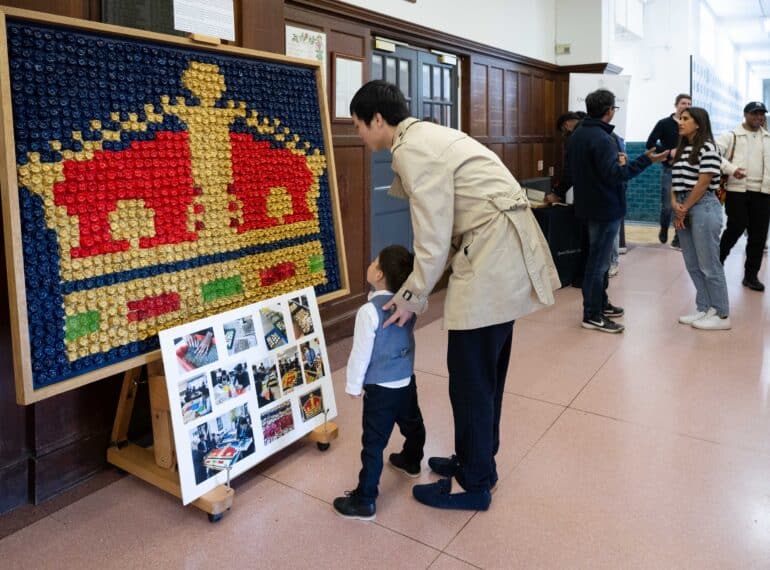
After its successful unveiling at last month’s Founder’s Day, plans are being drawn up to give a permanent home to a new artwork produced by every boy in the School.
The Tudor Rose Crown, a commemorative artwork produced to mark last year’s coronation of Charles III and Queen Camilla and as part of the School’s 450th anniversary celebrations, shows the crown as it appears on QE’s logo.
It comprises some 1,305 roses – one for each pupil – with every boy having made an impression into clay that was then cast into plaster.
The artwork is currently on display in the ‘Crush Hall’ – the area in the Main Building, close to the main entrance and Reception. It is hoped to relocate it to the Fern Building, near the Art Department, for the start of the 2024–2025 academic year, once tests to ensure the wall there can bear its weight have been completed.
Headmaster Neil Enright said: “This artwork is a striking visual commemoration of our 450th anniversary, made still more remarkable by the fact that every pupil had a hand in creating it. My congratulations go to the Art department on all their work in realising this vision.”
The crown from the logo is a representation of the crown on the original royal charter for the School, which was signed by Elizabeth I on 24th March 1573.
Art teacher Jeanne Nicodemus said: “Year 7 students painted the roses individually and meticulously.”
Year 12 boys then cast additional roses in red and green resin to represent the jewels in the crown.
The artwork is mounted on English oak, representing the strength and endurance of both the monarchy and the School.
The choice of wood also alludes to And Be It Known – the anthem commissioned for the School’s thanksgiving service in Westminster Abbey last year, in which international composer Howard Goodall compares QE to an oak, drawing its strength ‘from ancient roots spread deep and wide’.
One further allusion is to the 49 ceramic poppies mounted high in the School’s entrance hall. These were taken from the 2014 art installation at the Tower of London commemorating the centenary of the start of the First World War.
The poppies were bought for QE by the Trustees to the Foundation of the Schools of Queen Elizabeth using funds from a bequest from the late Dennis Nelms (OE 1934–1941) and his wife, Muriel. The number represents one flower for every OE who died in 1914–18, together with one in memory of Mr Nelm’s brother, Gordon (OE 1927-1932), who died in the Second World War.
- The making of the Tudor Rose Crown: click on the thumbnails below to view the images.

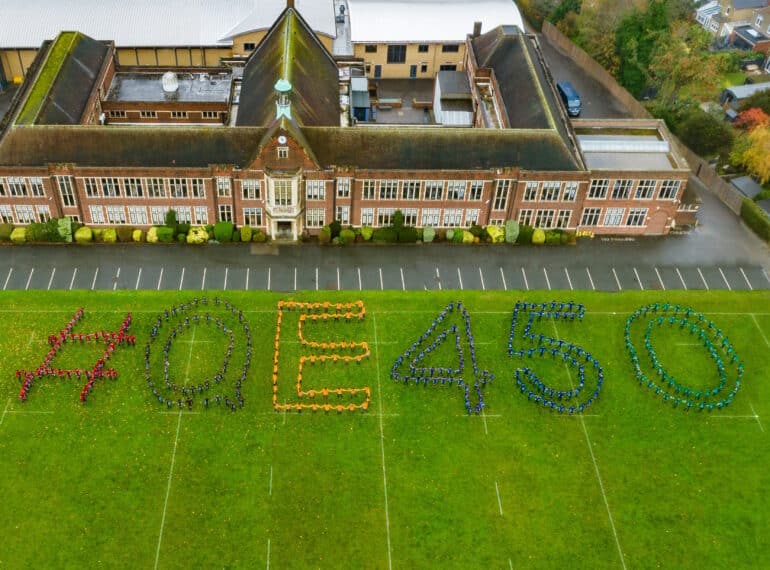
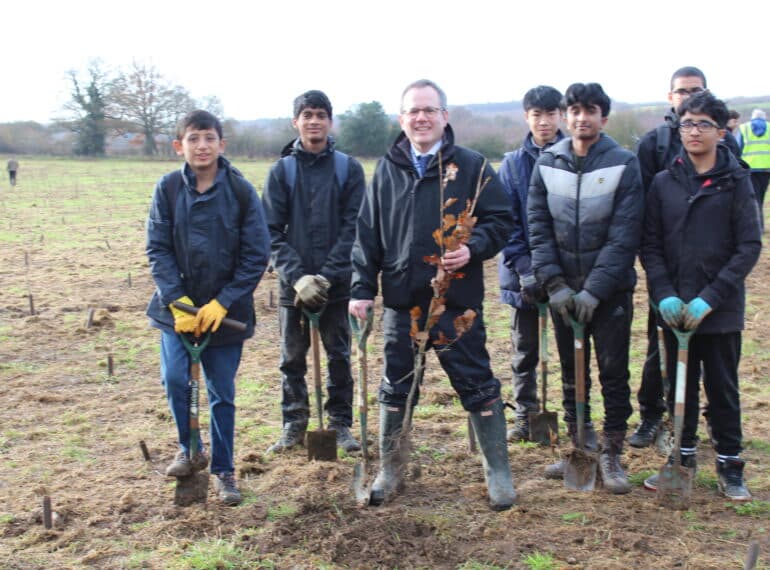
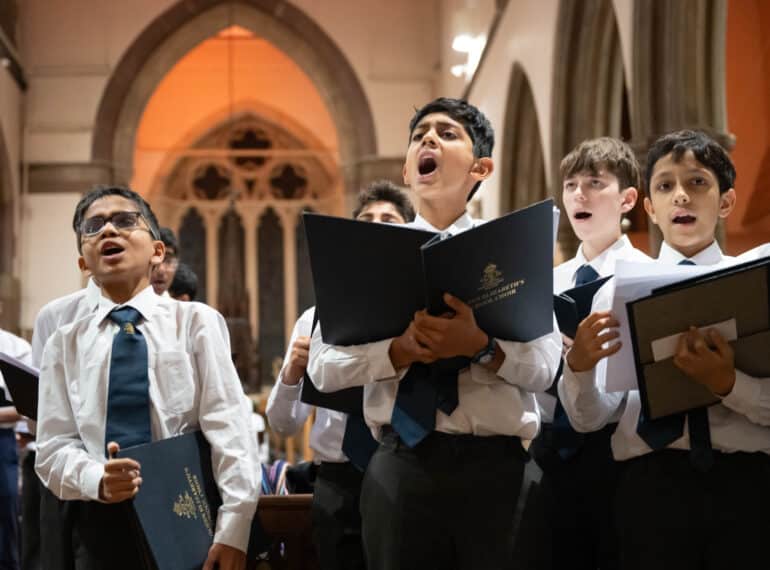
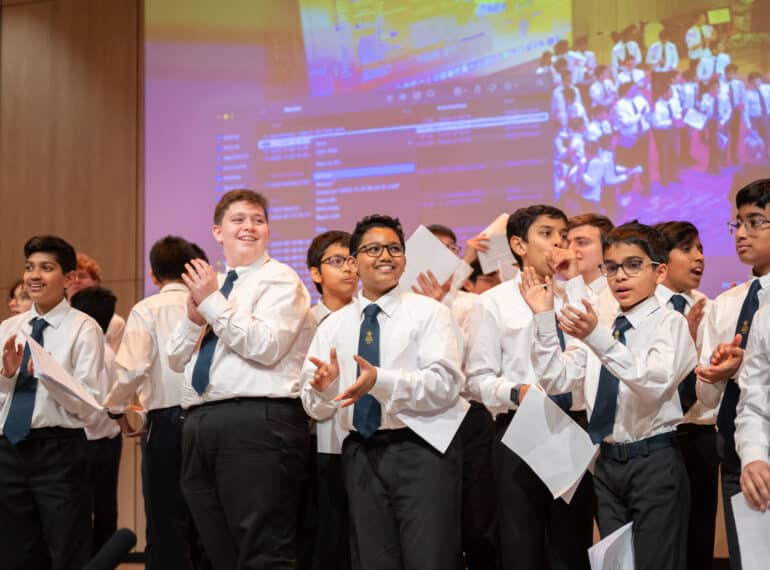
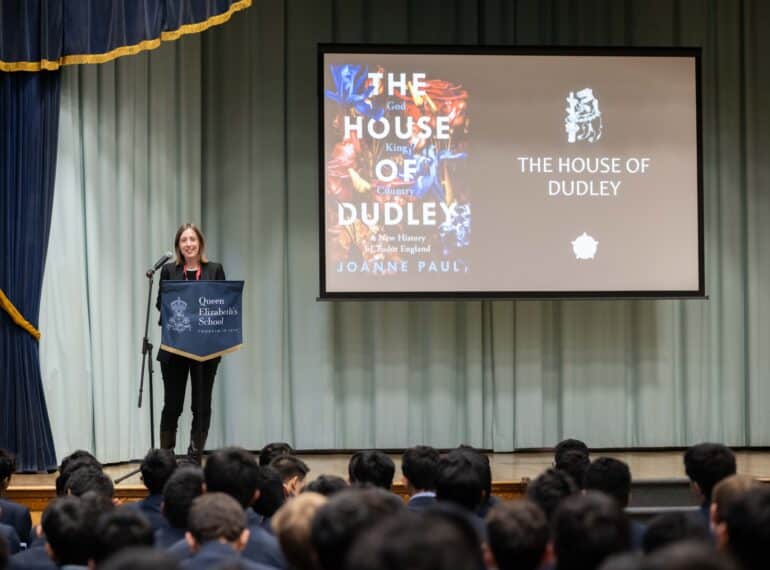
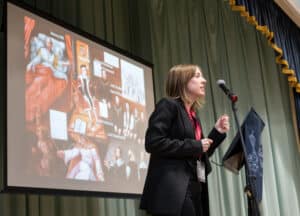 Dr Paul, author of the acclaimed 2022 book, The House of Dudley, delivered a lecture assembly to Years 8 & 9, before conducting a source-based workshop to A-level historians.
Dr Paul, author of the acclaimed 2022 book, The House of Dudley, delivered a lecture assembly to Years 8 & 9, before conducting a source-based workshop to A-level historians.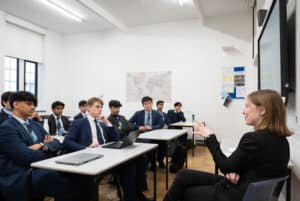 Headmaster Neil Enright said: “We are tremendously grateful to Dr Paul for giving us her time and providing these insights into the family as we wrap up our anniversary year. It seems clear that without the Dudleys, not only would Queen Elizabeth’s School not exist, but neither would the Tudors – or not as we know them, in any case.”
Headmaster Neil Enright said: “We are tremendously grateful to Dr Paul for giving us her time and providing these insights into the family as we wrap up our anniversary year. It seems clear that without the Dudleys, not only would Queen Elizabeth’s School not exist, but neither would the Tudors – or not as we know them, in any case.”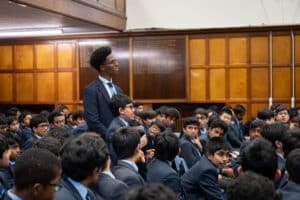 John Dudley’s success in building up the Royal Navy, as Admiral of the Fleet. He prepared it for the successes it was to enjoy in the second half of the 16th century. He added to the fleet and to the armoury, while developing Portsmouth as a great port. His military experience and leadership were important at the 1545 Battle of the Solent against the French, which, Dr Paul said, was a greater threat to England than the later Spanish Armada. John Dudley was nearly on the Mary Rose, which famously sank, but had moved across to the larger Great Harry with the king, Henry VIII.
John Dudley’s success in building up the Royal Navy, as Admiral of the Fleet. He prepared it for the successes it was to enjoy in the second half of the 16th century. He added to the fleet and to the armoury, while developing Portsmouth as a great port. His military experience and leadership were important at the 1545 Battle of the Solent against the French, which, Dr Paul said, was a greater threat to England than the later Spanish Armada. John Dudley was nearly on the Mary Rose, which famously sank, but had moved across to the larger Great Harry with the king, Henry VIII. The boys asked many questions. One wondered why so many grammar schools like QE were established under Elizabeth. Because, Dr Paul said, men such as Robert Dudley and William Cecil, her chief adviser, had received a humanist education and sought to spread that widely. Another asked why Henry VIII had had Edmund killed, given that he had brought so much money into royal coffers. She concluded that Henry probably had no personal animus against him, but that Edmund’s unpopularity made his death a good political move.
The boys asked many questions. One wondered why so many grammar schools like QE were established under Elizabeth. Because, Dr Paul said, men such as Robert Dudley and William Cecil, her chief adviser, had received a humanist education and sought to spread that widely. Another asked why Henry VIII had had Edmund killed, given that he had brought so much money into royal coffers. She concluded that Henry probably had no personal animus against him, but that Edmund’s unpopularity made his death a good political move.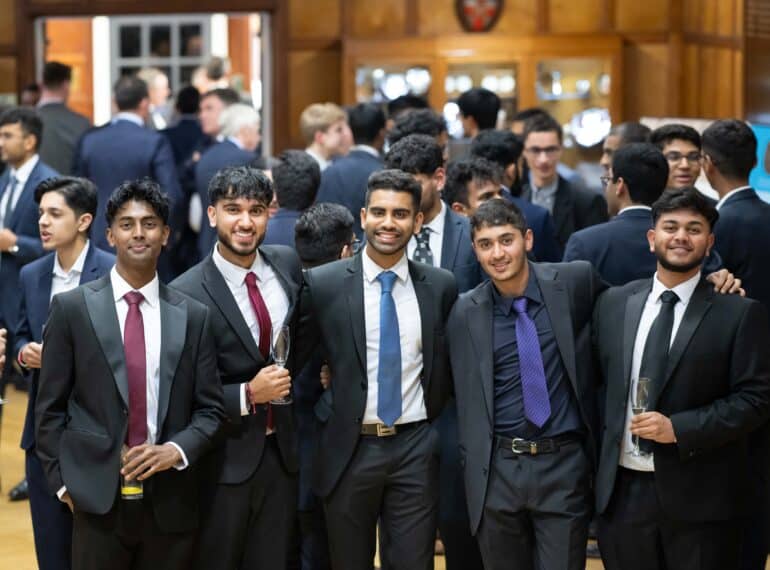
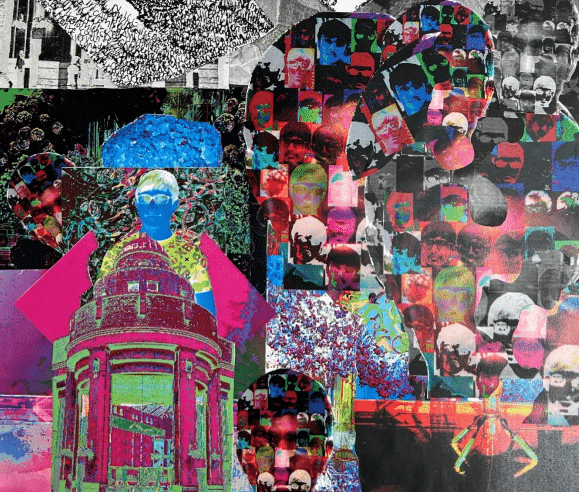
 The 44-page publication features 26 pieces of poetry, prose, and art, many of them inspired by its anniversary-related theme, How did we get here? The approach, looking both backward and forward, mirrors that of the School’s anniversary celebrations on Founder’s Day which included a display of the School’s 1573 Royal Charter alongside the burying of a time capsule intended for the pupils of 2073, when QE will mark its 500th anniversary. Work on the magazine began last academic year, but it has only now been published.
The 44-page publication features 26 pieces of poetry, prose, and art, many of them inspired by its anniversary-related theme, How did we get here? The approach, looking both backward and forward, mirrors that of the School’s anniversary celebrations on Founder’s Day which included a display of the School’s 1573 Royal Charter alongside the burying of a time capsule intended for the pupils of 2073, when QE will mark its 500th anniversary. Work on the magazine began last academic year, but it has only now been published.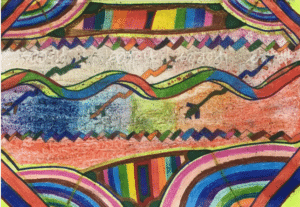 The poetry section is highly varied, with contributions ranging from Year 9 boy Yingqiao Zhao’s piece about the moon – which is in the shape of a crescent and has key words picked out in different colours – to the nine-stanza rhyming French poem, La Mort de L’Ancien, composed by Year 13’s Aayush Backory. The poetry section closes with Nikhil Francine, of Year 9, addressing the anniversary directly with a poem entitled Thriving from Ancient Roots – the School’s slogan for the anniversary year.
The poetry section is highly varied, with contributions ranging from Year 9 boy Yingqiao Zhao’s piece about the moon – which is in the shape of a crescent and has key words picked out in different colours – to the nine-stanza rhyming French poem, La Mort de L’Ancien, composed by Year 13’s Aayush Backory. The poetry section closes with Nikhil Francine, of Year 9, addressing the anniversary directly with a poem entitled Thriving from Ancient Roots – the School’s slogan for the anniversary year. Interspersed throughout The Arabella are artworks exploring themes including Expressive Heads, Distortion and Identity; Dystopian Landscape; and Art Inspired by Music. Shown in this news story, from top to bottom, are:
Interspersed throughout The Arabella are artworks exploring themes including Expressive Heads, Distortion and Identity; Dystopian Landscape; and Art Inspired by Music. Shown in this news story, from top to bottom, are: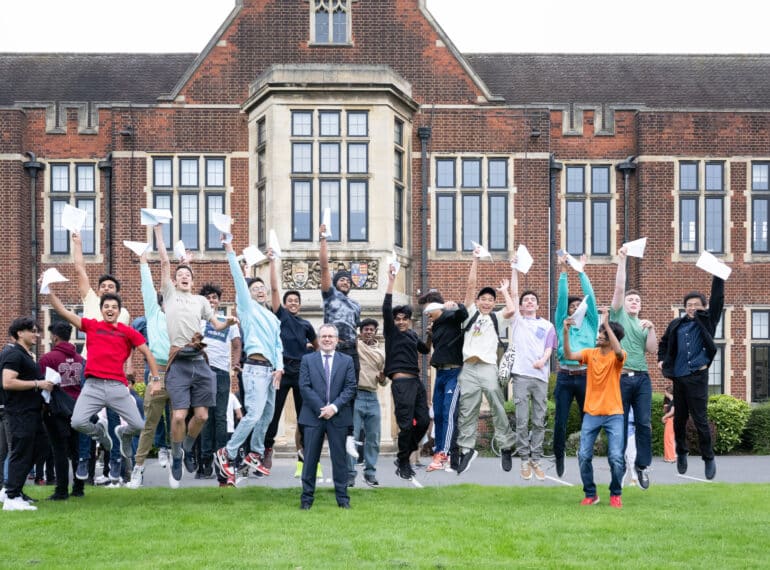
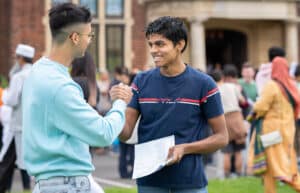 At the highest possible grade, the School improved significantly on its 2019 figures, with 58.2% of A-levels being awarded A* – easily beating the pre-pandemic record of 46.9% set in 2018. It was a similar record-breaking performance for combined A–A*: 89.1% of A-levels had these grades, well above the equivalent figure in the pre-Covid years.
At the highest possible grade, the School improved significantly on its 2019 figures, with 58.2% of A-levels being awarded A* – easily beating the pre-pandemic record of 46.9% set in 2018. It was a similar record-breaking performance for combined A–A*: 89.1% of A-levels had these grades, well above the equivalent figure in the pre-Covid years.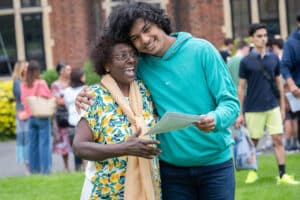 “We recognise that this Year 13 cohort has not always had an easy journey: they were unable to sit their GCSEs because of Covid, so, like their peers across the country, this was the first time they had faced high-stakes testing.
“We recognise that this Year 13 cohort has not always had an easy journey: they were unable to sit their GCSEs because of Covid, so, like their peers across the country, this was the first time they had faced high-stakes testing.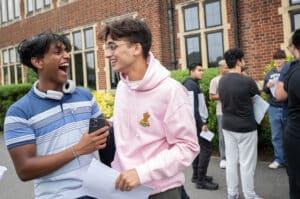 Among many successes across the subjects this year, French stands out for its 100% performance – all five candidates achieved A*.
Among many successes across the subjects this year, French stands out for its 100% performance – all five candidates achieved A*.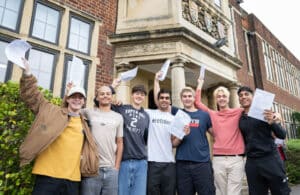 “They should be proud of the wider contribution they have made. Known for their kindness and empathy, they have supported each other as friends, and those lower in the School as peer mentors. They have also helped to establish and develop connections with the local Barnet community, such as our QE Together partnership with Queen Elizabeth’s Girls’ School.”
“They should be proud of the wider contribution they have made. Known for their kindness and empathy, they have supported each other as friends, and those lower in the School as peer mentors. They have also helped to establish and develop connections with the local Barnet community, such as our QE Together partnership with Queen Elizabeth’s Girls’ School.”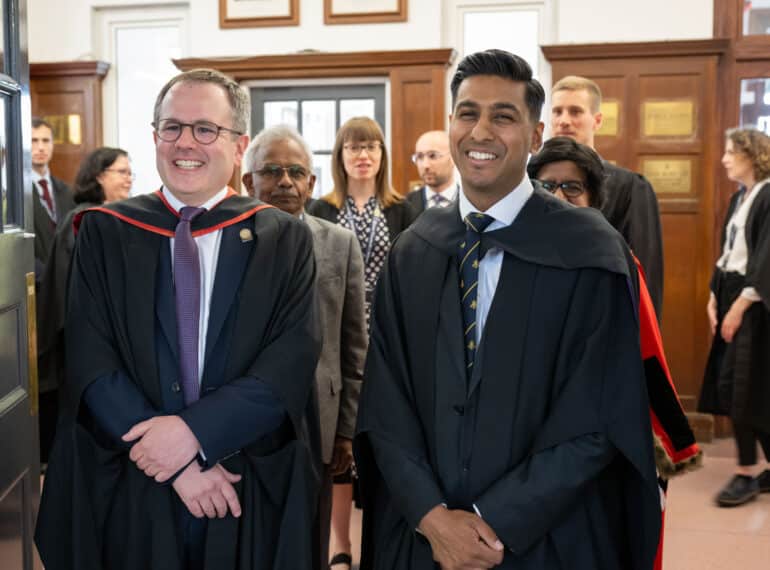
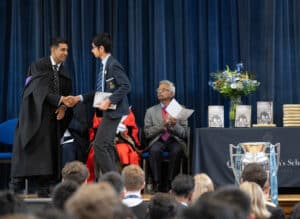 Former QE First XI cricket captain and First XV rugby player Sunil Tailor (OE 1996–2006) was the guest of honour, telling the boys that he had now united his love for sport with his career in accountancy: he is the Head of Commercial Finance at reigning Premiership champions Saracens.
Former QE First XI cricket captain and First XV rugby player Sunil Tailor (OE 1996–2006) was the guest of honour, telling the boys that he had now united his love for sport with his career in accountancy: he is the Head of Commercial Finance at reigning Premiership champions Saracens.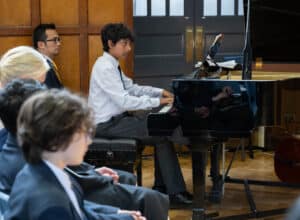 Sunil read Economics at UCL, graduating in 2009, and was a cricket coach at Middlesex from 2007–2011. He worked for more than ten years for accountancy firm MHA MacIntyre Hudson before joining Saracens in November 2022.
Sunil read Economics at UCL, graduating in 2009, and was a cricket coach at Middlesex from 2007–2011. He worked for more than ten years for accountancy firm MHA MacIntyre Hudson before joining Saracens in November 2022.